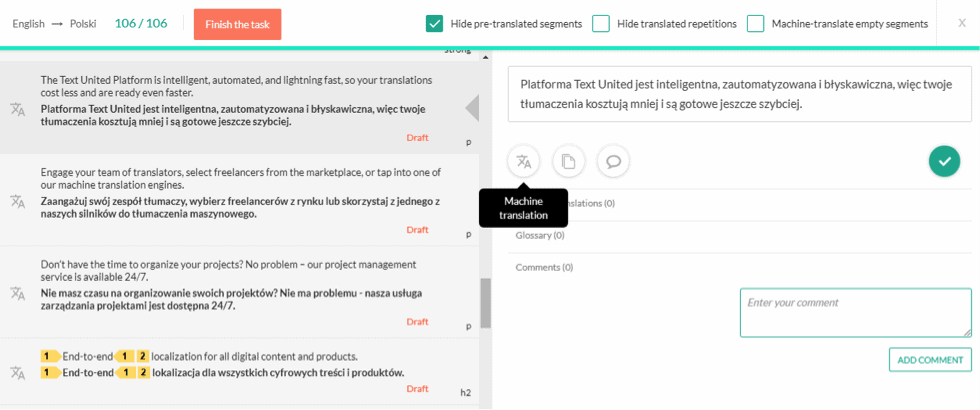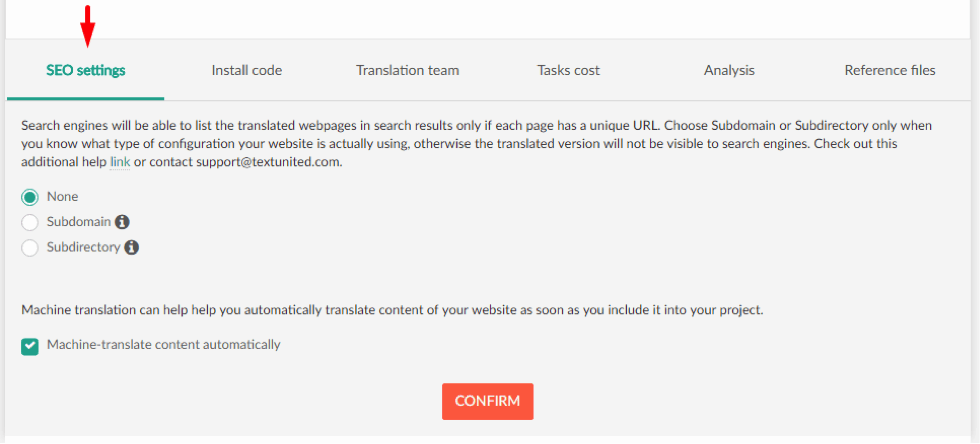All businesses that want to expand their growth to a global level will sooner or later face the question of what is the best way to translate their web content. An incredibly fast pace of improvements and breakthroughs in machine translation enables us to consider it as the cheapest solution available. After all, we can clearly see how this technology could enable a company to save costs. Compared to hiring a costly professional translator, Google Translate seems like a tempting solution especially for small and medium-sized enterprises. And, to make it clear – depending on the content that you have to translate, it may actually be a viable option!
The purpose of this text is not to convince you to opt for one system over another, but instead to give you inspiration as to how translate more for less. If you want to find out more, just keep on reading!
#1. Google Translate and Translation Quality
Without any qualms or doubts, we have to admit that Google Translate is an amazing tool, and furthermore one that is improving every single day. With the latest AI-related advances and launches of products like Google Duplex, we are pretty sure that also machine translation is on the brink of a breakthrough that will improve the lives of thousands of translators, linguists and project managers. However, this day is still not upon us (yet).
The translation quality of Google Translate (or any other machine translation system for that matter) is simply still not equivalent to that of a professional translator. Through translating your content, you want to send your brand message across, through using proper terminology and sharp linguistic accuracy, you want to engage your global customers. Translation using only Google Translate will fail to deliver that decisive hit. Why? Because of the context that can be easier understandable for human translators. If you follow the subject of machine learning, you probably know that the more a machine translates, the greater its effectiveness. Consequently, if you’re using machine translation for various language combinations, you’ll notice that translations from English to German are definitely of a higher quality than those of less frequent combinations such as Czech to Thai or Italian to Russian.
The winner here is the machine translation with post-editing approach that enables translators to work on the machine-translated content to add the final touches, localize translated content and add that native feel that your customers will notice. With machine translation integrated into the translation editor at TextUnited for example, you and your translators are able to make the final adjustments and correct machine-translated segments, giving them the necessary human touch for a high level of quality.
#2. Google Translate and SEO
The chances are high that you are adding new languages to your website precisely because of SEO since they add a significant boost to your visibility, and consequently, your Google ranking. Of course, the more content you add, the more your website should flourish. But is this always the case? Not really.
When you use only machine translation like Bing Translate or Google Translate on your website, Google bots can identify this via machine translation widget. Yep, you read it right – the bots recognize whether the content is human or machine-generated. As a result, your machine-translated website has no SEO relevancy whatsoever.
When you use a more advanced approach via a translation platform, what happens is the contrary. At TextUnited, meta tags containing keywords and a description of your website will also be extracted for translation and not only translated by a machine, but reviewed and corrected by translators as well. Of course, they should still take the time to localize them carefully (meaning extra cost for you) but you will not end up with useless automated literal word-by-word translation.
Another thing to remember is that search engines will only be able to list the translated web pages in search results if each page has a unique URL. Find out what type of configuration your website is actually using and choose a Subdomain or Subdirectory approach. With TextUnited, these options can be accessed when you open your website translation project:
#3. Google Translate and CSS Styling
You have to be prepared to make UI adjustments for the translated version of your website, no matter which approach you chose to use. Naturally, some of them seem to be more friendly when it comes to matching the content to the design. It will probably be no surprise to you when we say that Google Translate won’t give you any kind of control over the content-design relationship. Its main task is simply to translate, so what you get from it is plain text that you have to adapt to your design yourself. It cannot be that difficult, right?
Well, translating your website into another language can quickly give rise to styling issues. Your machine-translated, plain text can exceed margins and your menu items might take up too many lines. You also need to bear in mind the possibility of text expansion and note that languages like Russian, German or French can have longer words and take up more space than your original source text. Always think about the overall message that you will transmit your customers – website design should go hand in hand with the content!
Text United fixes these issues. Most importantly, you don’t have to make adjustments to the code, as everything is done live. A style editor is integrated into the overlay editor that works directly with your website, so you are able to adjust inconvenient elements.
Remember that it is your content that will direct the attention of search engines toward your brand. Always work on it and as much as you can since it’s going to pay you back sooner than you imagine. Of course, it’s up to you to choose your way!


